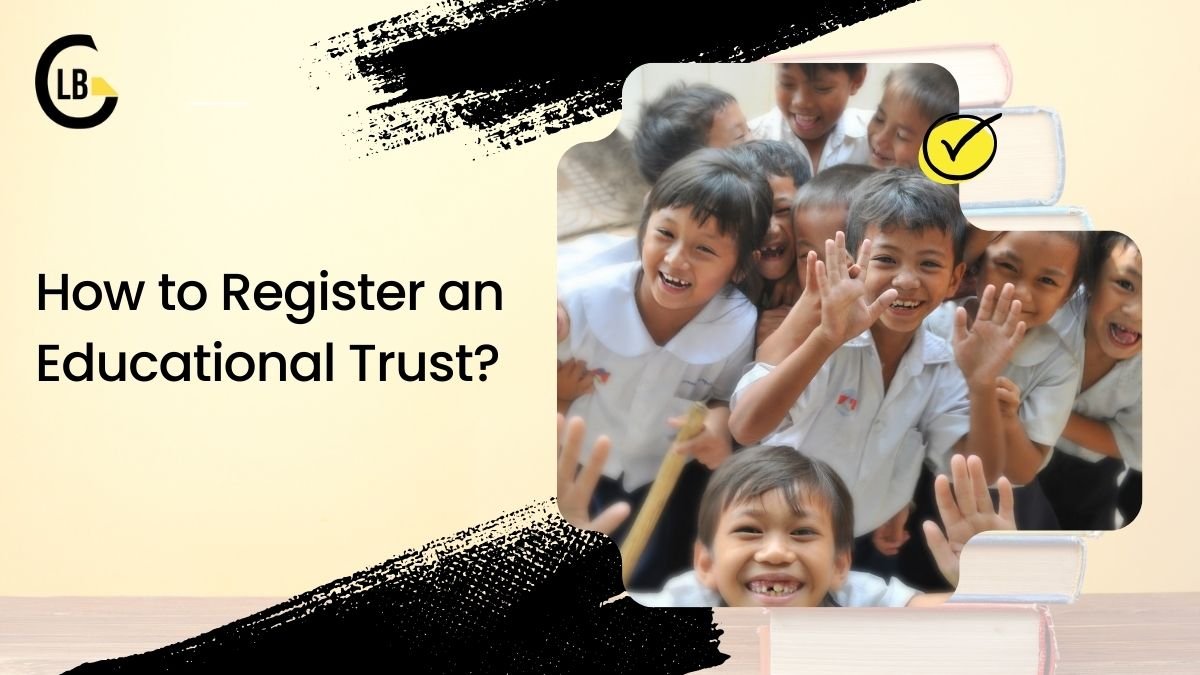Starting an educational trust is an excellent way to support education in your community. Whether you’re planning to build a school, offer scholarships, or help students in need, the first important step is registering your trust. This guide will walk you through the registration process in a clear and simple way.
What is an Educational Trust?
An educational trust is a non-profit organization aimed at promoting educational causes. It pools together resources—whether it’s money, property, or assets—that will be used to support education. This could involve funding schools, offering educational programs, or helping students with financial aid.
Why Should You Register an Educational Trust?
Registering your trust provides a number of benefits that you wouldn’t otherwise have. Here’s why it’s essential:
- Legal Status: Registration officially recognizes your trust, allowing it to function under the law.
- Tax Benefits: Once your trust is registered, it can apply for tax exemptions, helping you save funds that can be better spent on educational activities.
- Credibility: Donors are more likely to trust and contribute to a registered organization since they know it’s legitimate.
- Grants and Funding: Many grants and funding sources are only available to registered trusts, which could be crucial for your projects.
Steps to Register an Educational Trust
Follow these steps to register your trust:
1. Decide on the Type of Trust
You will be forming a public charitable trust for educational purposes, which is designed to benefit the public through educational initiatives.
2. Prepare a Trust Deed
The trust deed is the core document that lays out how the trust will operate. It should include:
- The name of the trust.
- The purpose (clearly focused on educational goals).
- Details of the trustees (a minimum of two is usually recommended).
- How the trust will be managed.
Ensure that the objectives in the deed are clearly defined and specific to education.
3. Appoint Trustees
Trustees are responsible for managing the trust’s resources and making decisions. Pick individuals who are trustworthy and have the commitment and skills to fulfill these responsibilities.
4. Secure Initial Assets
The trust needs to have some form of property or funds. This can be money, land, or other assets, which will be managed to achieve the educational goals outlined in the deed.
5. Stamp the Trust Deed
Before registering, the trust deed must be stamped in accordance with local regulations. The stamp duty may vary depending on your state, so check local requirements.
6. Register the Trust
Take the trust deed and supporting documents to the local registrar. You will need:
- The original trust deed and two copies.
- Photos of the trustees.
- Proof of address for the trust’s office.
- The necessary fee, which varies by state.
Once verified, the registrar will provide a certified copy of the registered trust deed.
7. Apply for a PAN Card
Your trust will need a PAN card for financial transactions and tax purposes. You can apply through online platforms such as NSDL or UTIITSL.
8. Get 12A and 80G Certificates
To get full tax benefits, apply for registration under Section 12A (which provides tax exemptions) and Section 80G (which allows donors to claim tax deductions on their donations). These certificates are important for gaining donor trust and saving money.
Common Mistakes to Avoid
- Incomplete Paperwork: Ensure all your documents are filled out completely and correctly. Mistakes or missing information can delay registration.
- Unclear Objectives: Make sure your trust deed clearly outlines your educational objectives.
- Ignoring Ongoing Compliance: After registration, make sure you regularly file required documents to avoid penalties or losing your trust’s status.
Conclusion
Registering an educational trust is an essential step in building a legal framework for your work. By following these steps, you ensure your trust is recognized by law, eligible for tax benefits, and trusted by donors and partners. Once registered, you can focus on what really matters—making a difference in the lives of students and promoting education.
